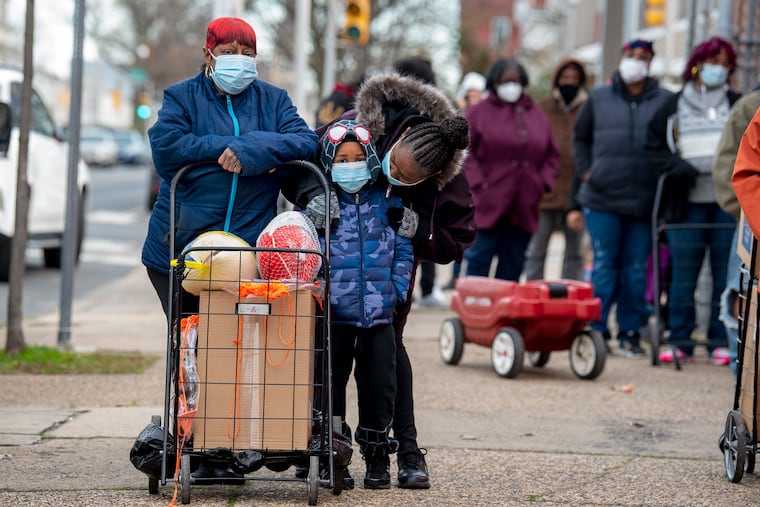Putting more food on more tables is job for Congress | Editorial
The pandemic is driving more and more Americans to line up for food assistance. But Covid-19 has also shown the value of massive federal spending such as that needed to boost the SNAP program.

The reality that millions of families live in fear of not having enough to eat has long been an unconscionable and, worse, accepted fact of American life. But the pandemic’s economic and social disruptions have imposed record-breaking demands on the federal Supplemental Nutrition Assistance Program (SNAP), traditionally known as food stamps, while exposing stark inequities around access to food in the world’s richest nation.
It’s hard to overstate the gravity of the situation. A new report by the advocacy group Hunger Free America found that total SNAP caseloads in 33 states, including Pennsylvania, jumped from 32 to 35 million in the pandemic’s early months. A recent analysis by the nonpartisan Center on Budget and Policy Priorities found that one-third of American adults have difficulty meeting basic expenses, such as food, with Black Americans disproportionately affected. And media images of epic waiting lines for free groceries across the country make clear that food insecurity knows no boundaries of age, race, or geography.
Nonprofit community organizations like Philabundance and faith-based food providers like the city’s Enon Tabernacle Baptist Church have risen to the challenge. Philabundance has even vowed the cyber scheme that fleeced the organization of more than $900,000 will not limit its services.
» READ MORE: Charitable organizations can’t be the only ones working to solve hunger and housing crises | Opinion
But SNAP and related federal programs account for about 90% of all food assistance in the country, and Congress needs to act now to provide more funding. To its credit, President Trump’s administration has allowed states some SNAP flexibility to meet the pandemic’s demands. But it also has perpetuated or made more onerous the eligibility and other requirements that limit SNAP’s effectiveness and reach. Data show the national average monthly SNAP benefit per person is $129.83, or less than $4 a day.
A federal regulatory shift that left 40% of SNAP recipients without an increase as monthly payments were boosted for others early in the pandemic was cruel. Worse, this was done while stocks in food pantries were stressed and local feeding programs were struggling with volunteer shortages and logistical issues due to COVID-19. Still-pending Trump administration regulatory ‘reforms’ would eliminate SNAP benefits for 3.7 million individuals, according to anti-hunger advocates. The Biden administration should eliminate punitive elements in programs providing essential nourishment to adults and children, who make up nearly half of food stamp recipients, according to CBPP.
» READ MORE: Why is it OK there are so many hungry among us? | Editorial
Feeding America, the nation’s largest anti-hunger organization, is calling for a 15% increase in the amount of SNAP benefits; citing the rise in unemployment due to the surge in coronavirus infections, other advocates say a 30% boost is required. The prospect that vaccines will soon be available is unlikely to provide immediate economic recovery — meaning that continued joblessness can be expected to leave tens of millions of families at greater risk of hunger well into 2021.
SNAP dates from 1968 and needs to be retooled. But it does ease the lives of people who would otherwise worry where their next meal is coming from. The panic buying and empty supermarket shelves of the early pandemic were for many Americans a first taste of that primal anxiety. Too many of their fellow Americans have been living with that fear for too long.